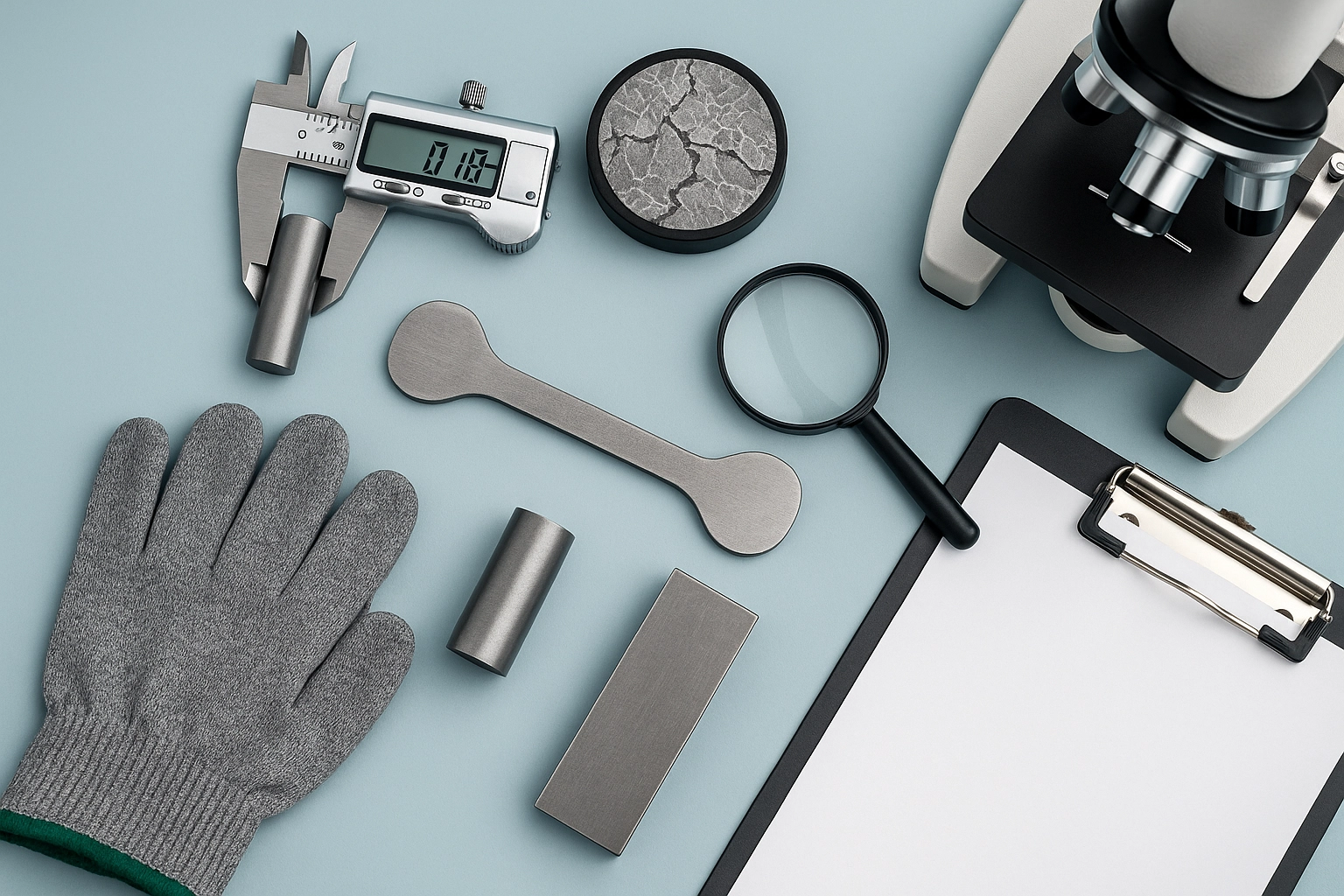Metallurgy & Material Testing
Metallurgy and material testing is a critical discipline that underpins the integrity of materials used in manufacturing processes across various industries. This field involves the examination, evaluation, and analysis of metals, alloys, and other materials to ensure they meet specified quality standards and performance requirements. The expertise required spans from microscopic analysis using advanced microscopes and spectroscopy techniques to macroscopic mechanical testing such as tensile strength tests.
The primary goal is to provide reliable data that supports decisions regarding material selection, process optimization, and quality assurance in the manufacturing sector. This service is essential for ensuring that materials are fit for purpose, whether they are used in aerospace, automotive, construction, or any other industry where safety and performance are paramount.
Metallurgical testing can be broadly categorized into two main types:
- Chemical analysis to determine the elemental composition of a material
- Physical/mechanical tests aimed at assessing properties like tensile strength, hardness, ductility, and fatigue limits
The process often begins with sample preparation where raw materials or manufactured parts undergo cleaning, polishing, and sometimes heat treatment. The next step involves selecting the appropriate testing methods based on the material type and desired information. For instance, X-ray diffraction (XRD) might be used for identifying crystal structures, while scanning electron microscopy (SEM) can provide detailed surface images.
Once the tests are conducted, results are analyzed using statistical tools to ensure accuracy and reliability. This data is then compiled into reports that include recommendations on material suitability or process adjustments needed to meet specific standards.
Metallurgy & Material Testing services typically adhere to international standards such as ISO 9001 for quality management systems, ASTM E8 for tensile testing of metallic materials, and EN 473:2016 for non-destructive testing. Adherence to these standards ensures consistency and comparability across different laboratories worldwide.
Given the complexity involved in metallurgical analysis, it is crucial that the laboratory adheres strictly to best practices throughout all stages of testing from sample preparation through final reporting. This includes maintaining calibration certificates for all instruments used during testing and employing trained personnel who stay updated on advancements within their field.
Scope and Methodology
| Test Type | Description |
|---|---|
| Chemical Analysis | Determination of elemental composition using techniques like ICP-OES, EDX, and AAS. |
| Mechanical Testing | Evaluation of physical properties such as tensile strength, hardness, ductility, etc., through standardized procedures. |
| Non-Destructive Testing (NDT) | Including ultrasonic testing (UT), radiographic examination (RT), magnetic particle inspection (MPI). |
The scope of metallurgical and material testing services includes not only routine inspections but also specialized projects aimed at resolving challenging issues related to material performance. These could involve failure analysis where the cause of a component's malfunction must be identified, or optimization studies designed to enhance product reliability.
Methodology involves precise sample preparation followed by rigorous adherence to internationally accepted protocols when performing various tests. For instance, tensile testing adheres closely to ASTM E8/E8M which specifies dimensions and procedures for tension testing of metallic materials. Similarly, SEM imaging follows guidelines set out in ISO 13356 ensuring high-quality images are obtained.
Industry Applications
| Industry Sector | Applications |
|---|---|
| Aerospace | Ensuring compliance with stringent quality standards; identifying potential defects early in development. |
| Automotive | Optimizing design and manufacturing processes to improve fuel efficiency while maintaining safety standards. |
| Construction | Evaluating structural integrity of large-scale structures like bridges and skyscrapers. |
| Energy | Assuring the quality of materials used in power generation facilities to prevent accidents. |
The application of metallurgical testing extends beyond just manufacturing industries; it plays a vital role in research and development (R&D) efforts too. Researchers often rely on this service to explore new alloys or composite materials that could lead to breakthroughs in technology.
In summary, metallurgy & material testing serves multiple purposes including quality assurance, process improvement, failure investigation, and innovation support across numerous sectors. Its importance cannot be overstated as it directly impacts the safety, efficiency, and longevity of products within these industries.
Quality and Reliability Assurance
- Calibration of all instruments regularly to ensure accuracy.
- Training of staff members on latest techniques and best practices continuously.
- Adherence to international standards such as ISO 9001 for quality management systems.
- Use of advanced analytical equipment like XRD, SEM, and FTIR consistently.
Quality assurance in metallurgy & material testing is paramount. The laboratory must ensure that every test conducted adheres strictly to recognized standards set forth by bodies such as ASTM International or the European Committee for Standardization (CEN). Regular calibration of all instruments ensures consistent results over time, which is crucial given the precision required in this field.
Continuous training of staff members allows them to stay abreast of any changes in methodology or new technologies that could impact testing outcomes. This commitment to ongoing education helps maintain high standards and enhances the reliability of test reports produced by the laboratory.
The use of advanced analytical equipment is another key aspect of ensuring quality assurance. These instruments provide precise measurements which contribute significantly towards obtaining accurate data from tests performed on samples submitted for analysis.





